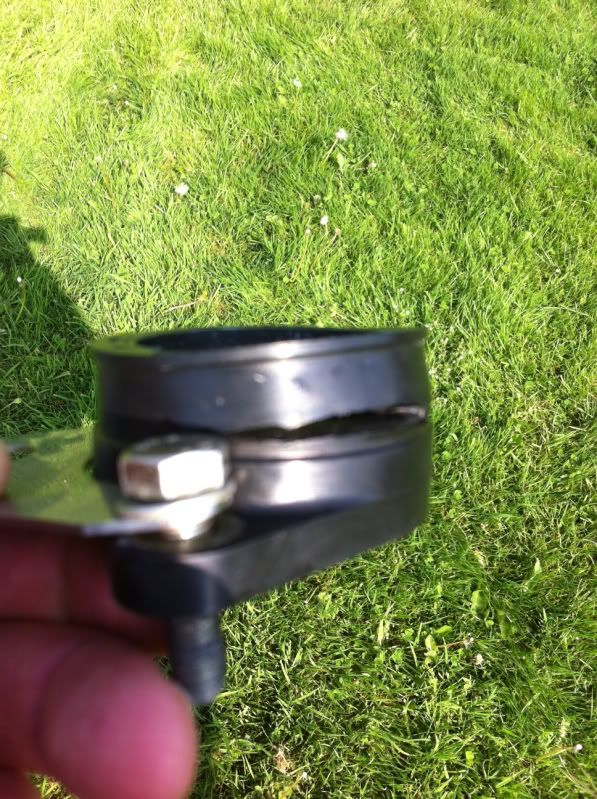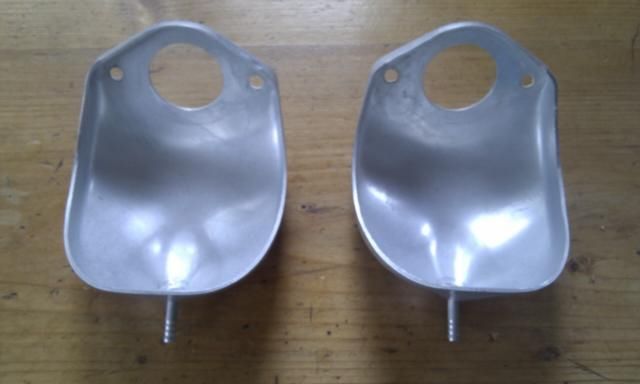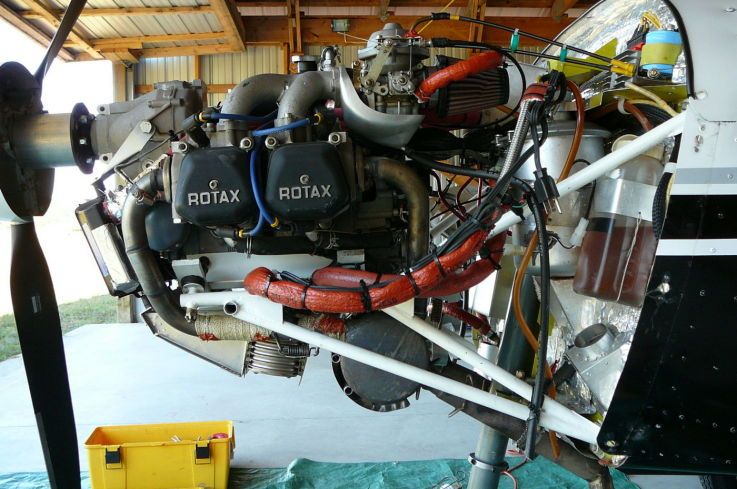Fuel tank positioning
Thread Starter
Fuel tank positioning
Several aircraft I've come across have the fuel tank within the fuselage, specifically the cri-cri which has it between and underneath the pilot's legs, and the Luciole which has it over the pilot's legs, and between the engine and pilot.
The first position surprises me as I would have expected any fuel leaks to make the cabin smell horrid, but more to the point because in case of an accident you're likely to fill the pilot compartment with sloshing fuel. The positioning in the Luciole seems if anything worse, as although the filler cap is outside the cabin if the tank split it would likely slosh fuel all over a hot engine.
I would imagine that storing fuel in the wings would be safer in the event of an accident, but these designs were made with easy disassembly as a design goal and I can understand why they are built the way they are (also, fuel leaks in a wing constructed partially of foam aren't something I would like to have to worry about). However, do people think that these tank placements are worth losing sleep over - would you avoid buying or flying an aircraft with the tanks in these or similar positions?
The first position surprises me as I would have expected any fuel leaks to make the cabin smell horrid, but more to the point because in case of an accident you're likely to fill the pilot compartment with sloshing fuel. The positioning in the Luciole seems if anything worse, as although the filler cap is outside the cabin if the tank split it would likely slosh fuel all over a hot engine.
I would imagine that storing fuel in the wings would be safer in the event of an accident, but these designs were made with easy disassembly as a design goal and I can understand why they are built the way they are (also, fuel leaks in a wing constructed partially of foam aren't something I would like to have to worry about). However, do people think that these tank placements are worth losing sleep over - would you avoid buying or flying an aircraft with the tanks in these or similar positions?
Lots of aircraft have fuselage fuel tanks. Piper Aerostar, Victa Airtourer and a Beechjet I fly come to mind. As long as the design & construction are sound I wouldn't worry too much about it.
Or you can go the opposite philosophy of Cessna's C310 designers: The mains were deliberately placed in wingtip nacelles for crash considerations.
Or you can go the opposite philosophy of Cessna's C310 designers: The mains were deliberately placed in wingtip nacelles for crash considerations.
Join Date: Feb 2007
Location: Amsterdam
Posts: 4,598
Likes: 0
Received 0 Likes
on
0 Posts
Fuel is heavy, and is something that is consumed during the flight (duh), so it has a considerable impact on the W&B shift during the flight. For that reason, you will want the fuel to be as close to the CofG as possible.
Wing tanks are one way of achieving that, and have the added advantage that the fuel weight is at the same location as the lift generation, so there is no stress path through, for instance, the spar box. But if for some reason wing tanks are not possible - for instance because the wings need to be deriggable, or because you're designing an aerobatics aircraft that needs a high roll rate - the second best choice is mid-fuselage. Which happens to be the same place where the occupants are to be found.
Wing tanks are one way of achieving that, and have the added advantage that the fuel weight is at the same location as the lift generation, so there is no stress path through, for instance, the spar box. But if for some reason wing tanks are not possible - for instance because the wings need to be deriggable, or because you're designing an aerobatics aircraft that needs a high roll rate - the second best choice is mid-fuselage. Which happens to be the same place where the occupants are to be found.
Join Date: Feb 2003
Location: Oxford
Posts: 2,042
Likes: 0
Received 0 Likes
on
0 Posts
I used to fly a Slingsby Firefly T67-C which had the fuel tank directly above the engine. The prospects of a fuel leak onto a hot engine didn't bear thinking about.
Mind you, it was the water leak down the back of the neck in the rain which was a problem most of the time...
I think it's still flying - G-BOCM - last saw it at Headcorn a couple of years back...
Mind you, it was the water leak down the back of the neck in the rain which was a problem most of the time...
I think it's still flying - G-BOCM - last saw it at Headcorn a couple of years back...
Join Date: May 2013
Location: have I forgotten or am I lost?
Age: 71
Posts: 1,126
Likes: 0
Received 0 Likes
on
0 Posts
I would have expected any fuel leaks to make the cabin smell horrid,
I would imagine that storing fuel in the wings would be safer in the event of an accident
I fly with just over a hundred litres of fuel above my knees. I tell you what. it focusses the attention and prevents you ever being a sloppy pilot.

to keep it all in perspective just remember that more aircraft are retired from service because they are worn out than are ever lost to crashes.
more pilots die of old age than die in crashes. just note the average age of PPruners.

Jodel DR1050 wood and fabric - 55 litres behind firewall, over front occupant's legs and behind panel with its electrical wires. Another 55 litres under the rear seat.
A fatal accident where the aircraft impacted at low speed on the spinner (down) did not lead to fire.
Most, if not all, light aircraft have fuel pipes, with joints and taps, in the cockpit. These are more likely to leak than a tank.
A fatal accident where the aircraft impacted at low speed on the spinner (down) did not lead to fire.
Most, if not all, light aircraft have fuel pipes, with joints and taps, in the cockpit. These are more likely to leak than a tank.

Join Date: Jan 2002
Location: Earth
Posts: 1,189
Likes: 0
Received 0 Likes
on
0 Posts
In the event of an impact with the ground, if the aircraft ignites (with plenty of fuel on board) then it doesn't really make a whole lot of difference if the fuel is in the wings, the fuselage or under the seat. If a fire breaks out, the speed it spreads would be at a rate that the wreck would be engulfed pretty quickly.
More of a worry for me is the event of an in-flight fire caused by the set-up inside the engine bay. As mentioned above by someone else, tanks rarely suddenly start leaking. However, pipe joins do, and pipes can split.
The Rotax 912 set-up sometimes gives me shivers when I look at it. It's made up of two carburettors that are attached to the inlet manifold by rubber flanges. These flanges frequently crack (see below). As well as cracking, they often don't make a perfect seal against the carb' socket, thereby meaning that fuel drips are common. So common in fact, that Rotax even sell fuel drip trays!! (pic' also below).
The reason this is so alarming is that directly under the carbs and their little drip trays lies the exhaust manifold, at the hottest part where it leaves the CH. And below that, the muffler that normally passes horizontally below both carbs.
I'm not knocking the 912. It's brilliant. But some of the possibilities for engine fire are a little bit concerning.
Cracked flange after less than 10 hours of use:

Drip trays:

Drip trays in place. Look at exhaust manifold exiting from cylinder proximity to drip tray!!!

More of a worry for me is the event of an in-flight fire caused by the set-up inside the engine bay. As mentioned above by someone else, tanks rarely suddenly start leaking. However, pipe joins do, and pipes can split.
The Rotax 912 set-up sometimes gives me shivers when I look at it. It's made up of two carburettors that are attached to the inlet manifold by rubber flanges. These flanges frequently crack (see below). As well as cracking, they often don't make a perfect seal against the carb' socket, thereby meaning that fuel drips are common. So common in fact, that Rotax even sell fuel drip trays!! (pic' also below).
The reason this is so alarming is that directly under the carbs and their little drip trays lies the exhaust manifold, at the hottest part where it leaves the CH. And below that, the muffler that normally passes horizontally below both carbs.
I'm not knocking the 912. It's brilliant. But some of the possibilities for engine fire are a little bit concerning.
Cracked flange after less than 10 hours of use:

Drip trays:

Drip trays in place. Look at exhaust manifold exiting from cylinder proximity to drip tray!!!

Thread Starter
Thanks for the replies...
To clarify, the cri-cri filler cap is in the cabin, so I would have expected the occasional spill. I didn't mean to put up with a chronic leak from the pipework!
I guess the take-home message is that if I ever do get round to building something, I should lavish more attention on the fittings than the tank, which is useful.
To clarify, the cri-cri filler cap is in the cabin, so I would have expected the occasional spill. I didn't mean to put up with a chronic leak from the pipework!
I guess the take-home message is that if I ever do get round to building something, I should lavish more attention on the fittings than the tank, which is useful.
Last edited by abgd; 19th Jun 2013 at 00:10.




